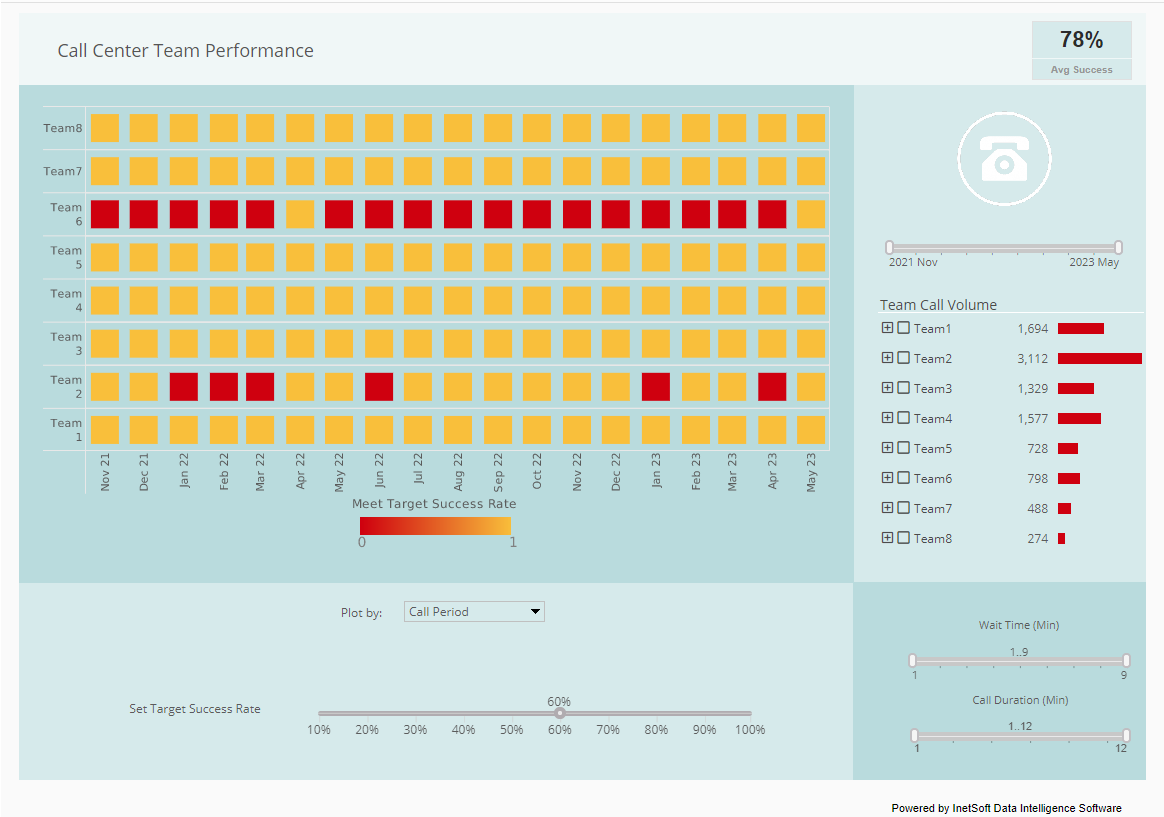Dashboard Design Patterns
Style Intelligence uses advanced object-oriented techniques in its design. Some of the designs may be directly or indirectly exposed to the users as part of the public API. For users familiar with object-oriented design patterns, the use of the patterns is obvious. Since understanding the design patterns is very important to mastering the InetSoft API, we will briefly go through the major patterns in the public API.
Model-View-Controller
The Model-View-Controller (MVC) design pattern is widely used in graphical user interfaces. It provides a well-defined way to separate the presentation, management and storage of data.
By separating the view and the data, a dataset can be stored in one place and be presented by multiple views, possibly in different formats. Because there is only a single copy of the data, it is very efficient in terms of storage, and avoids the need to redistribute and populate data changes during programming.
The MVC design pattern is the primary mechanism for defining a report. The report itself always acts as the view in the MVC pattern.
Models for Reporting
The model used by the report can be derived from a number of sources. The report is a view that presents data retrieved from the screen components. The screen components serve as the data model for the report, in addition to their possible role as views for the actual data source.
InetSoft products provide built-in support for printing screen components to a report, especially in table format. By using adapters, printing a table from the screen is as easy as adding one simple function call.
The other plausible setup when using Style Intelligence is to use the same data source used by the screen components. In this case, the report simply becomes another view of the data. The data source can be as simple as the model used in the screen component, such as the table model in the Swing JTable.
Additionally, the data source can be a distributed source or database. Since this setup requires the report to query the data directly from the data source, it could potentially be less efficient than getting the information directly from the screen components. If the information required for a report already exists on screen, we recommend using the screen data as the model.
More Articles About Dashboards
Connect to Your Data Source with the Free Dashboard App - On the Getting Started screen, you can choose to upload a file to provide the data to your dashboard, or you can connect to a cloud data source. If you want to start building the dashboard using a data source that is already connected, press Create Dashboard with Sample Data. However, in this case, we will connect to a Google Sheet data source. To do this, follow the steps below: Press the Create button at the top right, and select Data Source...
InetSoft's Mobile Visualization Tools - InetSoft's solution is known for combining state-of-the-art visualization with more traditional reporting capabilities. Even InetSoft's free visualization tool, Visualize Free, has been ranked among the top 10 visualization tools in the industry. With an approach to BI that's focused on self-service, end-users can now perform the same data analyses and intuitive visualizations outside of the office. Mobile friendly BI tools such as InetSoft's Style Intelligence have given a new meaning to data visualization away from your desktop...
Semiconductor Manufacturer KPIs - Yield Rate: Yield rate measures the percentage of good, usable chips produced compared to the total number of chips manufactured. It's a crucial indicator of production efficiency and quality control. Defect Density: Defect density quantifies the number of defects or faults per unit area of semiconductor wafer. Lower defect densities indicate higher product quality. Throughput and Cycle Time: Throughput measures the number of wafers processed per unit of time, while cycle time refers to the time taken to complete a specific manufacturing step. Both KPIs are critical for optimizing production efficiency...
Solving the Cycle of Reporting Pain - So let's jump into the content. This is going to last about 30 minutes, and then we'll have a Q&A session at the end of that. So the main problem and its related that a visual reporting tool covers is what we call the "Cycle of Pain," which comes in two forms. The first is the custom report request, and we see all the time with our clients that an end-user group or end-user has some question...

